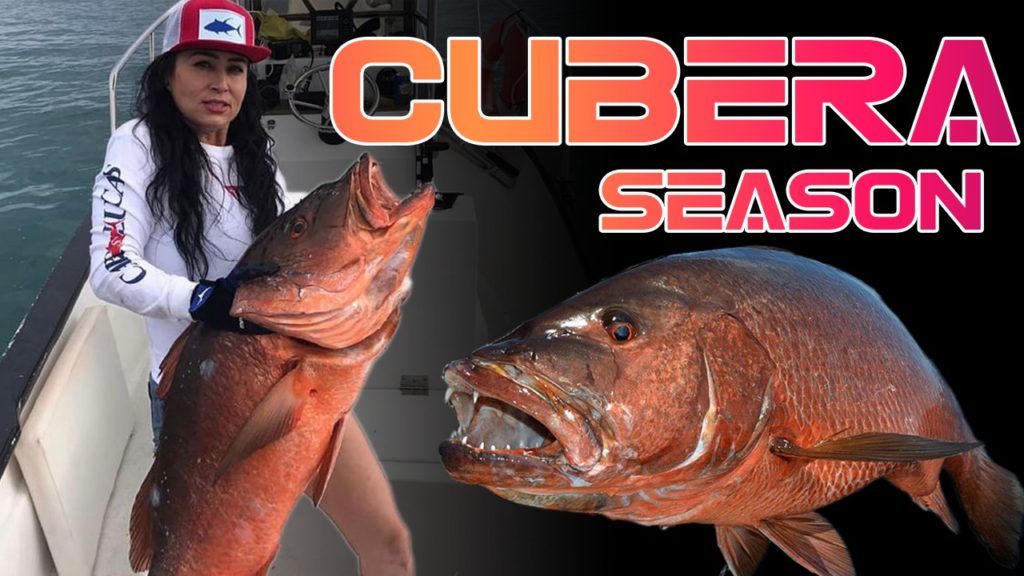All About Cubera Snappers: The Titan of the Reefs
Cubera snappers (Lutjanus cyanopterus) are one of the most sought-after game fish among anglers and divers alike. Their sheer size and power make them an exciting catch, but there’s much more to these fish than meets the eye. Let’s dive deep into the world of Cubera Snappers.
1. Basic Facts:
- Scientific Name: Lutjanus cyanopterus
- Family: Lutjanidae
- Average Size: 3 to 40 pounds, but can grow up to 125 pounds.
- Lifespan: Up to 50 years
- Habitat: Tropical and subtropical waters, reefs, rocky areas, and mangroves
2. Physical Appearance:
Cubera snappers are robust, large fish with a dark gray to brownish coloration. They possess a distinctive set of large, sharp canine teeth, which are easily visible even when their mouths are closed. Their body is somewhat elongated, and they have a triangular dorsal fin.
3. Distribution and Habitat:
Cubera snappers inhabit the western Atlantic Ocean, ranging from Massachusetts to Brazil, including the Gulf of Mexico and the Caribbean Sea. They prefer rocky areas, coral reefs, and mangroves, usually staying close to the bottom in depths between 18 to 55 meters.
4. Diet:
As carnivorous predators, Cubera snappers primarily feed on crustaceans, smaller fish, and cephalopods. Their large canines are perfect for grabbing and holding onto their prey.
5. Reproduction:
Cubera snappers reproduce via external fertilization, where females release eggs into the water, which are then fertilized by males. Spawning occurs during the warmer months, and females can release up to several millions of eggs in a single season.
6. Fishing Tips:
For those looking to catch a Cubera snapper, especially in places like Cabo San Lucas, here are some essential tips:
- Bait: Live mackerels, dead mackerels, and mullets are the top choices. These fish can’t resist them!
- Tackle: Given their size and strength, use heavy tackle.
- Technique: In Cabo San Lucas, fishing during the evening or nighttime can yield better results as they’re more active during these times. Targeting them around structures using Scotty downriggers to get the bait to a depth where the sonar reads the snappers is highly effective.
7. Conservation Status:
While Cubera snappers are not currently listed as endangered, their populations have been affected by overfishing in certain areas. It’s crucial for anglers to practice sustainable fishing methods and respect local regulations.
8. Did You Know?
Cubera snappers produce a loud “knocking” sound when alarmed or threatened. This sound is generated by their swim bladders and serves as a warning to potential threats.
Conclusion:
The Cubera snapper is truly a marvel of the oceans. Their strength, beauty, and importance to marine ecosystems make them a species worth understanding and conserving. Whether you’re an angler in Cabo San Lucas, a diver, or simply an ocean enthusiast, appreciating the Cubera snapper means recognizing its role in the larger web of marine life.
Join Us for the Ultimate Fishing Experience in Cabo San Lucas!
Have you ever dreamt of reeling in a majestic Cubera snapper in the pristine waters of Cabo San Lucas? Your dream can now become a reality! At Tag Cabo Sportfishing, we offer unparalleled fishing experiences that promise adventure, thrill, and unforgettable memories. With our expert guides, top-notch equipment, and insider knowledge of the best fishing spots, we ensure you have the best shot at catching the prized Cubera snapper and many other incredible species.
Don’t miss out on this once-in-a-lifetime opportunity. Book your fishing trip with Tag Cabo Sportfishing today and embark on an adventure that will leave you with stories to tell for years to come!
Reach out to us via email tagsportfishing@gmail.com

